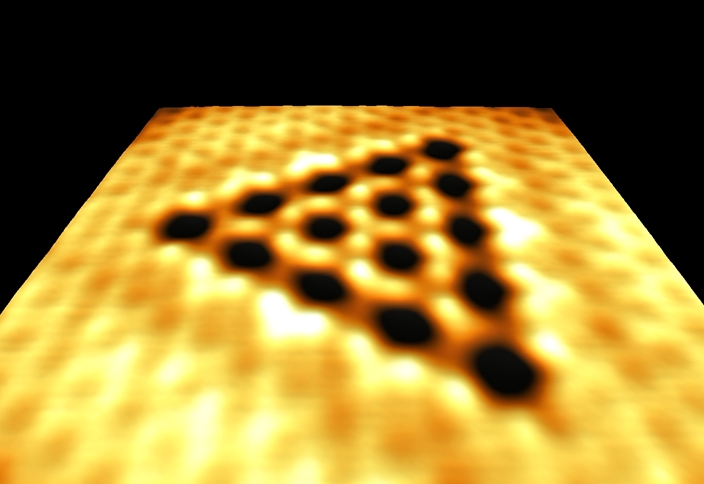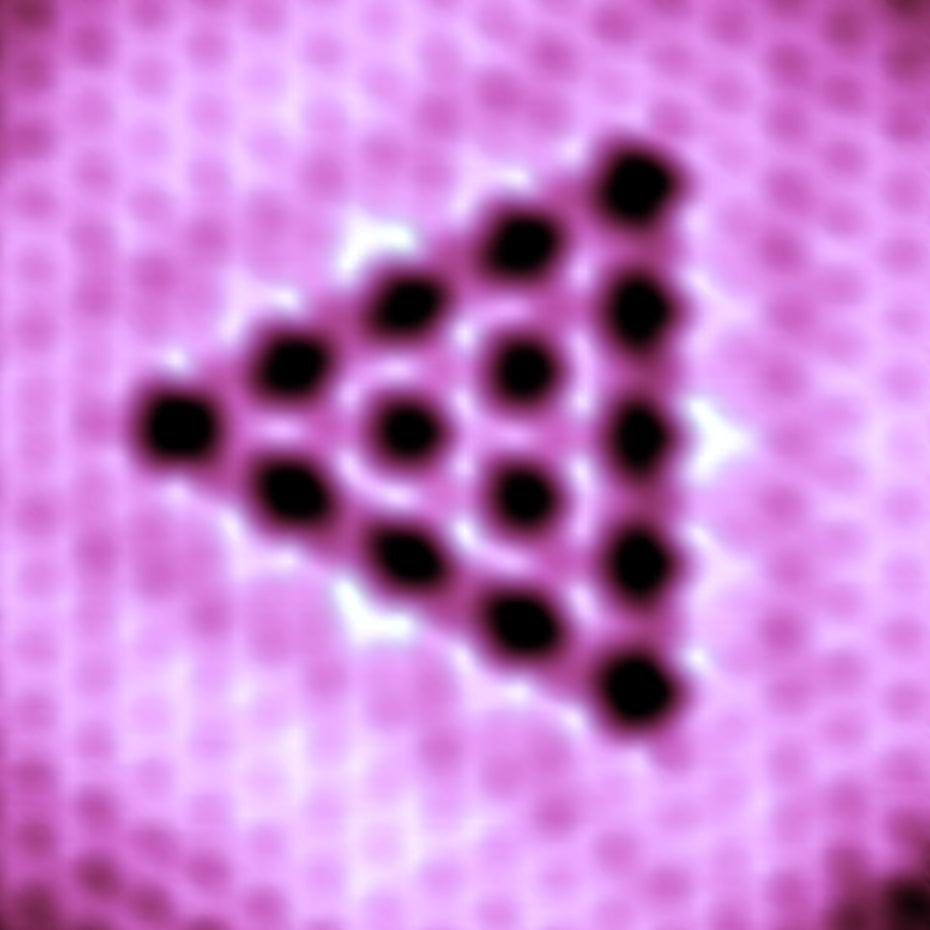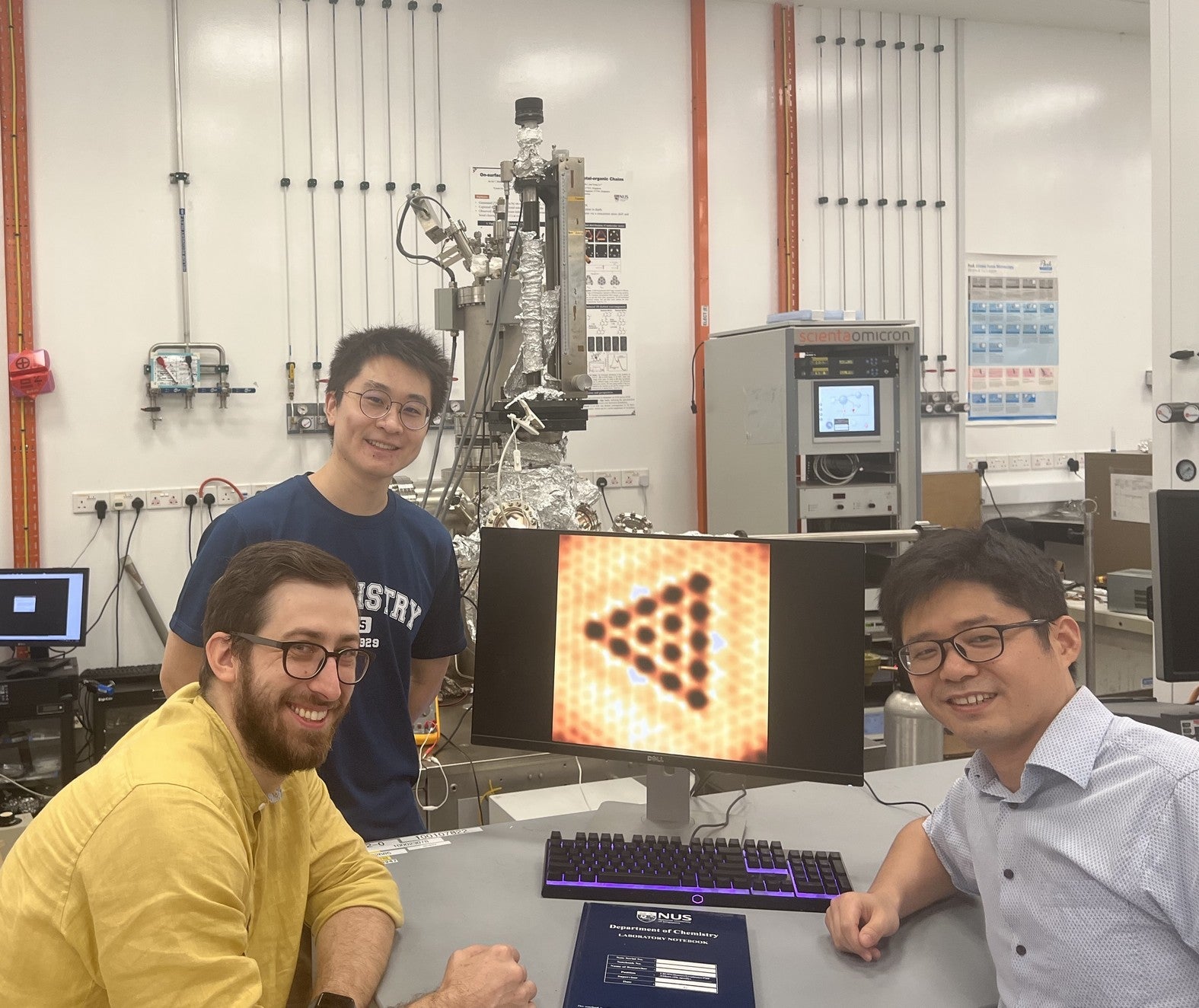
A research team led by Associate Professor Jiong LU from the Department of Chemistry and the Institute for Functional Intelligent Materials, NUS introduced a conceptual breakthrough by fabricating atomically precise quantum antidots (QAD) using self-assembled single vacancies (SVs) in a two-dimensional (2D) transition metal dichalcogenide (TMD). QADs can serve as a promising new-generation candidate that can be used for applications such as quantum information technologies. This was achieved through the self-assembly of the SVs into a regular pattern (see Figure 1). The atomic and electronic structure of the QADs is analysed using both scanning tunnelling microscopy (STM) and non-contact atomic force microscopy (nc-AFM). This work is performed in collaboration with Assistant Professor Aleksandr RODIN’s research group from the Yale-NUS College.
The study was published in the journal Nature Nanotechnology.
A defective platinum ditelluride (PtTe2) sample containing numerous tellurium (Te) SVs was intentionally grown for this study. After thermal annealing, the Te SVs behave as “atomic Lego”, self-assembling into highly ordered vacancy-based QADs. These SVs inside QADs are spaced by a single Te atom, representing the minimal distance possible in conventional antidot lattices. When the number of SVs in QADs increases, it strengthens the cumulative repulsive potential. This leads to enhanced interference of the quasiparticles within the QADs. This, in turn, results in the creation of multi-level quantum hole states, featuring an adjustable energy gap spanning from the telecommunication to far-infrared ranges.
Due to their geometry-protected characteristics, these precisely engineered quantum hole states survived in the structure even when vacancies in QADs are occupied by oxygen after exposure to air. This exceptional robustness against environmental influences is an added advantage of this method.
Prof Lu said, “The conceptual demonstration of the fabrication of these QADs opens the door for the creation of a new class of artificial nanostructures in 2D materials with discrete quantum hole states. These structures provide an excellent platform to enable the exploration of novel quantum phenomena and the dynamics of hot electron in previously inaccessible regimes.”
“Further refinement of these QADs by introducing spin-polarised atoms to fabricate magnetic QADs and antiferromagnetic Ising systems on a triangular lattice could provide valuable atomic insights into exotic quantum phases. These insights hold potential for advancing a wide variety of material technologies,” added Prof Lu.

Figure 1: Scanning tunnelling microscopy image of an atomically-precise quantum antidot (QAD) self-assembled by 15 single tellurium (Te) vacancies on platinum ditelluride (PtTe2) surface. [Credit: Nature Nanotechnology]

Figure 2: The NUS research team comprising (left to right) Assistant Professor Aleksandr Rodin, Dr Fang Hanyan and Associate Professor Lu Jiong with a display showing an atomically-precise quantum antidot which has promising potential for use in energy conversion and quantum information technologies applications.
Read the full story here.
